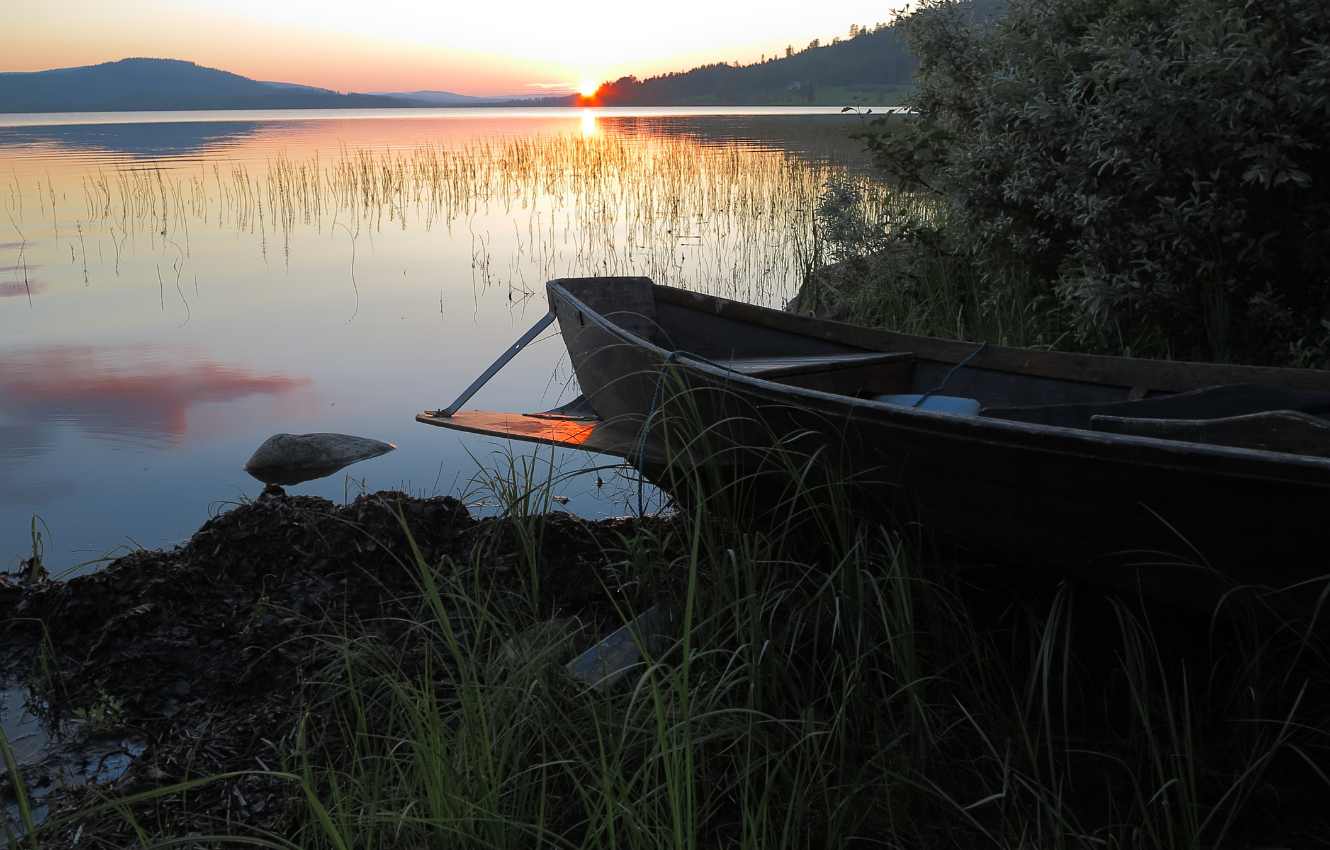Spain Biodiversity: Animal and Plant Species and What Is Under Threat
Did you know that Spain is home to a staggering variety of flora and fauna, making it one of the biodiversity hotspots of Europe? With its diverse ecosystems, including forests, wetlands, mountains, and coastlines, Spain harbors a multitude of unique and endangered species.
Key Takeaways:
- Spain is a biodiversity hotspot in Europe, boasting a wide range of flora and fauna.
- Spain’s diverse ecosystems, such as forests, wetlands, mountains, and coastlines, support a variety of unique and endangered species.
- Conserving Spain’s biodiversity is crucial for maintaining ecological balance and preserving the country’s natural heritage.
- Threats such as habitat loss, climate change, and invasive species pose significant challenges to the survival of Spanish wildlife.
- Efforts are underway to protect and conserve Spain’s biodiversity through the establishment of protected areas and the implementation of conservation plans.
Conservation Efforts in Spain
Spain is taking significant steps to ensure the conservation of its diverse and precious biodiversity. With a wide array of unique animal and plant species at stake, the country has implemented various conservation efforts to protect and preserve its natural heritage.
One of the key strategies employed is the establishment of numerous protected areas across Spain. These areas include national parks, nature reserves, and other specially designated regions that safeguard sensitive ecosystems and endangered species. Protected areas serve as havens for wildlife, allowing them to flourish undisturbed by human activities.
Furthermore, Spain has played a pivotal role in the development of the Natura 2000 network, a comprehensive and interconnected network of protected areas throughout Europe. This network includes Special Protection Areas (SPAs) for birds and Sites of Community Importance (SCIs) for other species and habitats. By being a part of the Natura 2000 network, Spain is actively contributing to the conservation of its rich biodiversity and ensuring the sustainable use of its natural resources.
Another crucial aspect of conservation efforts in Spain is the focus on species conservation. The country has implemented measures to protect and recover endangered species through habitat restoration, captive breeding programs, and strict regulations against illegal hunting and trading. Spain recognizes the importance of maintaining genetic diversity and promoting ex situ conservation, where threatened species are cared for outside their natural habitats, such as in zoos, botanical gardens, or seed banks.
Spain’s conservation efforts are not only a testament to its commitment to biodiversity conservation but also a demonstration of its understanding that the preservation of natural ecosystems is vital for the well-being of both nature and society.
Through these concerted conservation efforts, Spain is striving to strike a balance between human activities and nature, ensuring that future generations can continue to enjoy the country’s awe-inspiring flora and fauna.
Conservation Efforts in Numbers
| Protected Areas | Natura 2000 Network | Endangered Species |
|---|---|---|
| Over 16% of Spain’s land area | 2,000+ protected sites covering over 27% of Spain’s territory | Over 500 endangered species under protection |
Implementation of the NBSAP in Spain
In Spain, the implementation of the National Biodiversity Strategy and Action Plan (NBSAP) plays a crucial role in addressing the conservation and sustainable use of biodiversity. This strategic plan, also known as the Strategic Plan on Natural Heritage and Biodiversity, aligns with the EU Biodiversity Strategy and sets forth specific targets for biodiversity preservation within the country.
“The implementation of the NBSAP in Spain enables us to protect and conserve our unique biodiversity while promoting sustainable practices for future generations,” says Maria Garcia, a biodiversity expert.
Composed of goals, objectives, and actions, the NBSAP outlines a comprehensive approach to integrate biodiversity into sectoral policies, enhance knowledge on biodiversity, conserve global biodiversity, and drive public engagement in nature conservation.
One of the key objectives of the NBSAP is to improve knowledge on biodiversity through research and monitoring, fostering a deeper understanding of Spain’s ecological systems and species diversity. By enhancing scientific knowledge, policymakers and conservationists can make informed decisions and implement effective measures for biodiversity conservation.
The NBSAP also focuses on the integration of biodiversity into various sectoral policies, such as agriculture, forestry, fisheries, and tourism. By incorporating biodiversity considerations, Spain aims to minimize negative impacts on ecosystems and promote practices that are compatible with nature conservation.
Furthermore, the NBSAP emphasizes the conservation of global biodiversity, recognizing Spain’s responsibility to safeguard species and ecosystems of international importance. Collaborative efforts, such as the establishment of protected areas and participation in international conservation initiatives, contribute to the preservation of global biodiversity.

Public participation is an integral part of the NBSAP, with the aim of generating awareness and empowering citizens to actively contribute to nature conservation. By involving the public in decision-making processes and promoting environmental education, Spain seeks to foster a sense of responsibility towards biodiversity and ecosystem protection.
Overview of Biodiversity Targets in Spain
| Biodiversity Target | Description |
|---|---|
| 1 | Improve knowledge on biodiversity through research and monitoring |
| 2 | Integrate biodiversity into sectoral policies, such as agriculture, forestry, fisheries, and tourism |
| 3 | Conserve global biodiversity and protect species and ecosystems of international importance |
| 4 | Promote public participation in nature conservation and environmental education |
The implementation of the NBSAP in Spain demonstrates the country’s commitment to preserving its unique biodiversity and ensuring the long-term sustainability of its ecosystems. Through collaborative efforts and targeted actions, Spain strives to achieve its biodiversity targets and create a more environmentally conscious society.
Protected Areas and Natura 2000 in Spain
Spain is committed to preserving its diverse ecosystems and unique biodiversity. The country has established a significant number of protected areas, encompassing both terrestrial and marine environments. These protected areas play a vital role in conserving Spain’s natural heritage and are designated under different legal regimes to ensure their proper management and protection.
One of the notable conservation initiatives in Spain is the Natura 2000 network. This network aims to safeguard Europe’s most valuable and threatened habitats and species. It comprises a network of protected areas across the European Union, and Spain has made substantial contributions by designating various sites within its territory.
There are numerous terrestrial protected areas in Spain, including national parks, natural parks, and biosphere reserves. These areas are characterized by their unique ecosystems, stunning landscapes, and a wide array of flora and fauna. Each protected area has specific conservation objectives and regulations in place to preserve the biodiversity within its boundaries.
Furthermore, Spain recognizes the importance of marine conservation and has designated marine protected areas along its coastlines. These areas contribute to the preservation of marine ecosystems, including coral reefs, seagrasses, and endangered species. The marine protected areas in Spain serve as sanctuaries for marine life, safeguarding crucial habitats and promoting sustainable fishing practices.
In order to ensure effective protection and management of these protected areas, Spain has implemented conservation plans. These plans outline the objectives, strategies, and actions required to preserve the unique biodiversity within each protected area. They serve as guiding documents for sustainable management practices and conservation efforts.
| Type of Protected Area | Number in Spain |
|---|---|
| National Parks | 15 |
| Natural Parks | 90 |
| Biosphere Reserves | 49 |
| Marine Protected Areas | 23 |
Table: Types and Number of Protected Areas in Spain
Overall, Spain’s commitment to the conservation of its protected areas and the integration into the Natura 2000 network showcases its dedication to preserving its natural heritage and fostering sustainable development. Through continued efforts, Spain aims to safeguard its diverse ecosystems and ensure the long-term survival of its unique biodiversity.
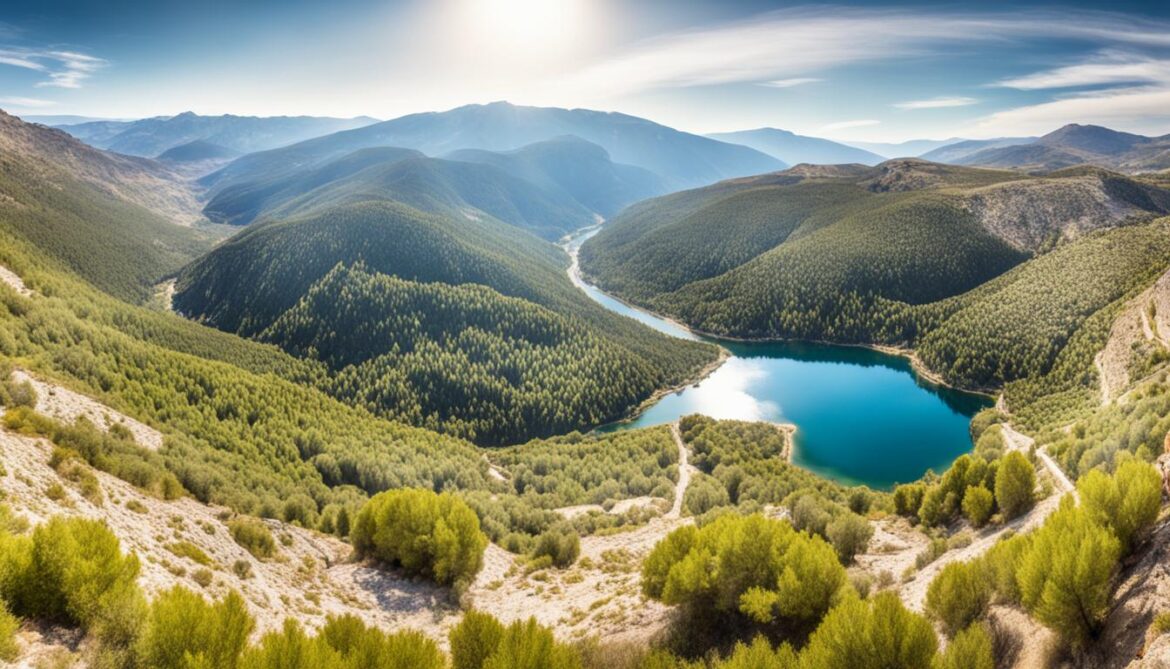
Endangered Species and Threats in Spain
Spain is home to a diverse range of plant and animal species, many of which are currently endangered. These species face numerous threats that pose significant risks to the country’s biodiversity. It is crucial to address these threats and implement effective conservation measures to protect these vulnerable species and their habitats.
Threats to Biodiversity in Spain
The threats to biodiversity in Spain are multifaceted and encompass various factors. One of the primary threats is habitat loss, resulting from urbanization, agricultural expansion, and deforestation. As natural habitats are destroyed or fragmented, the native species that depend on them for survival are pushed to the brink of extinction.
Habitat Loss in Spain
Habitat loss in Spain has been occurring at an alarming rate. Urbanization and infrastructure development continue to encroach on natural habitats, displacing native species and disrupting ecosystems. Additionally, agricultural practices, such as intensive farming and the use of pesticides, have further contributed to habitat degradation.
Climate Change Impact on Spanish Biodiversity
Climate change is another significant threat to Spanish biodiversity. Rising temperatures, changing rainfall patterns, and extreme weather events can disrupt ecosystems and negatively affect species’ ability to adapt. Changes in temperature and rainfall can lead to shifts in species distribution, altered migration patterns, and reduced reproductive success.
Endangered Species in Spain
Spain is home to numerous endangered species, including iconic animals like the Iberian lynx, the Iberian imperial eagle, and the brown bear. These species are particularly vulnerable to habitat loss, hunting, and pollution. As their populations decline, urgent conservation efforts are required to prevent their extinction and restore their habitats.
Conservation Measures
To address the threats facing endangered species in Spain, conservation measures are essential. These measures include the establishment and protection of protected areas, the enforcement of stricter regulations to prevent habitat destruction, and the promotion of sustainable practices in agriculture and land use.
“Conservation is an ongoing effort that requires collaboration among government agencies, non-profit organizations, and the general public. It is crucial to raise awareness about the importance of biodiversity and the need for its protection. Together, we can make a difference and ensure a future where endangered species thrive in their natural habitats.”
By taking action now, we can preserve the incredible biodiversity of Spain and safeguard these unique species for future generations to enjoy.
Climate Change and Biodiversity in Spain
Climate change has significant implications for biodiversity in Spain, with various effects on ecosystems and species. One of the notable impacts is the changes in phenology, which refers to the timing of biological events in nature. As a result of climate change, Spain is experiencing earlier spring phenophases, such as flowering and leaf emergence, and delays in autumn vegetative phases, such as leaf senescence.
This phenology shift can disrupt the delicate balance of species interactions and ecological processes, potentially affecting the reproduction, feeding patterns, and migration of wildlife. It also has implications for agriculture and forestry.
The warming trend in the Mediterranean basin, including Spain, is also a cause for concern. The region is experiencing higher temperatures compared to the global average, and this warming is projected to continue. Rising temperatures can lead to habitat loss and the redistribution of species, which may threaten the survival of native plants and animals adapted to specific climatic conditions.
Furthermore, freshwater biodiversity in Spain is vulnerable to the impacts of climate change. Changes in water inputs, such as reduced rainfall and altered river flows, can disrupt the delicate balance of freshwater ecosystems. Rising water temperatures due to climate change can also have adverse effects on aquatic species, particularly those adapted to cooler conditions.
Overall, climate change poses significant challenges to Spanish biodiversity. Addressing these challenges requires a comprehensive understanding of the impacts and the implementation of adaptive management strategies to support ecosystem resilience.
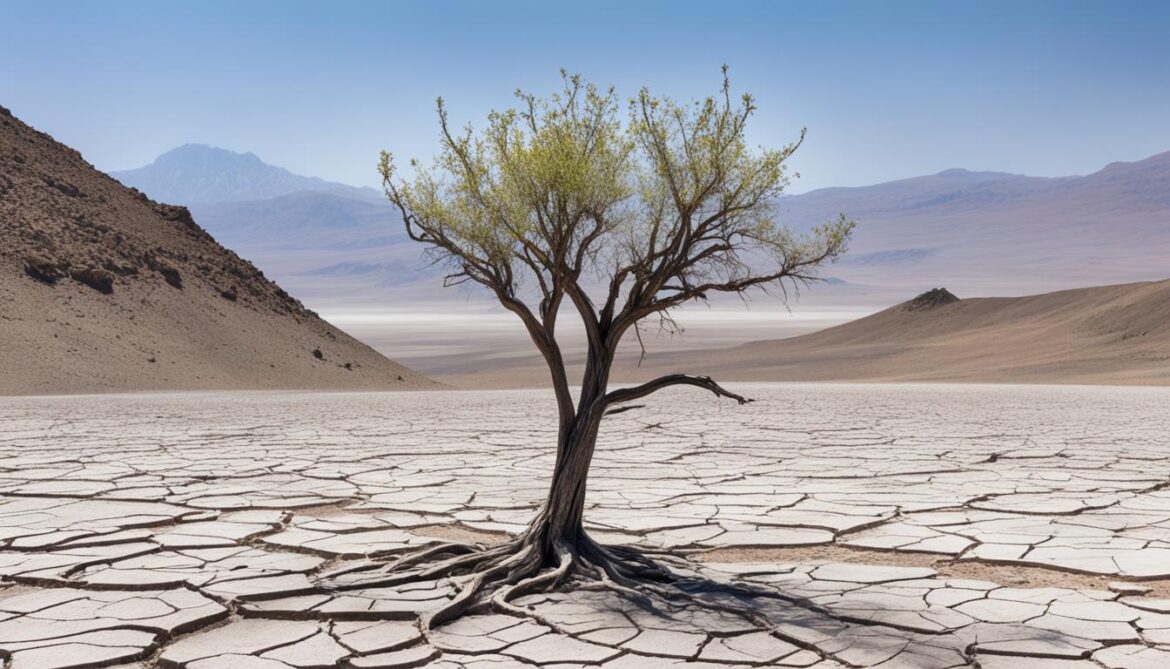
| Impacts of Climate Change on Spanish Biodiversity | Biodiversity Response |
|---|---|
| Changes in phenology: Earlier spring phenophases and delays in autumn vegetative phases | Disruption of species interactions, potential shifts in migration and feeding patterns |
| Warming in the Mediterranean basin | Potential habitat loss, redistribution of species, threat to native flora and fauna |
| Freshwater biodiversity vulnerability | Disruption of freshwater ecosystems, impact on aquatic species |
Specific Threats to Spanish Ecosystems
Certain ecosystems in Spain face specific threats that put their biodiversity at risk. Let’s take a closer look at some of these threats:
Doñana Wetlands
The Doñana wetlands are a critically important ecosystem located in southwestern Spain. Sadly, this unique habitat is under threat from several factors:
- Eutrophication: Excessive nutrient runoff, often from agricultural activities, can lead to eutrophication in the wetlands, causing imbalances in the ecosystem and negatively impacting plant and animal life.
- Reduced flow of incoming streams: Changes in water flow patterns, due to water extraction or alterations in stream courses, can disrupt the delicate balance of the wetlands, affecting the distribution of species and their habitats.
- Groundwater extraction: Excessive extraction of groundwater from the area’s aquifers can lead to the drying out of the wetlands, resulting in the loss of crucial habitats and the decline of species that depend on these unique environments.
Bay of Biscay Ecosystem
The Bay of Biscay, located along the northern coast of Spain, is home to a diverse array of marine life. However, this ecosystem is currently facing significant challenges:
- Warming sea temperatures: Climate change is causing sea temperatures to rise, disrupting the balance of the Bay of Biscay ecosystem. These temperature changes affect the distribution and abundance of fish populations, impacting the overall health and functioning of the ecosystem.
- Alterations in nutrient concentrations: Human activities, such as pollution and changes in water and sediment flow, can lead to alterations in nutrient concentrations in the bay. These changes can have far-reaching effects, influencing the growth and survival of various species within the ecosystem.
Mediterranean Sea Biodiversity
The Mediterranean Sea is a unique and diverse marine ecosystem that spans several countries, including Spain. Unfortunately, it faces multiple threats:
- Climate change: Rising sea temperatures, ocean acidification, and sea level rise associated with climate change pose a significant risk to the biodiversity of the Mediterranean Sea. These changes can disrupt the delicate balance of marine ecosystems, affecting species’ ability to survive and reproduce.
- Salinization: Excessive water withdrawals and poor water management practices can lead to increased salinization of coastal areas, impacting the biodiversity of the Mediterranean Sea.
- Acidification: The absorption of excess carbon dioxide by seawater can increase the acidity of the Mediterranean Sea, affecting the growth and survival of marine organisms, particularly those with calcium carbonate-based shells or skeletons.
It is crucial to address these specific threats to Spanish ecosystems to safeguard the unique biodiversity they harbor. Conservation efforts, sustainable management practices, and international collaboration are essential for ensuring the long-term health and resilience of these ecosystems.

Unique Flora and Fauna in Spain
Spain is home to a remarkable array of unique flora and fauna, including many endemic species that are found nowhere else in the world. These distinctive plants and animals contribute to the biodiversity hotspots in Spain, which are areas of exceptional ecological diversity and significance. Protecting these extraordinary species and their habitats is of utmost importance for the conservation of biodiversity in Spain.
Spain’s diverse landscapes and varied climate provide a wide range of habitats for unique flora and fauna to thrive. From the lush forests of the Pyrenees to the arid deserts of Almería, each region offers a distinct ecosystem that supports a rich variety of species.
One example of the unique flora in Spain is the Teide violet (Viola cheiranthifolia), which is endemic to the volcanic slopes of Mount Teide in Tenerife. This vibrant purple flower adapts to the harsh conditions of its environment, blooming beautifully against the stark volcanic backdrop.
Another remarkable endemic species in Spain is the Iberian lynx (Lynx pardinus), one of the rarest and most endangered wild cats in the world. Found primarily in the southwestern part of the country, the Iberian lynx is known for its distinctive tufted ears and spotted coat. Efforts to protect and restore its habitat have been crucial for ensuring the survival of this magnificent species.
“The unique flora and fauna of Spain are invaluable assets that contribute to the country’s natural heritage. Preserving these extraordinary species is not only essential for ecological balance but also for the cultural and aesthetic value they bring to our lives.”
There are several other examples of endemic species in Spain, ranging from rare orchids to unusual reptiles. These distinct species have evolved over time in isolation, adapting to the specific environmental conditions of their habitats.
The biodiversity hotspots in Spain, such as the Sierra de Guadarrama National Park and the Doñana National Park, are particularly important areas for the preservation of unique flora and fauna. These hotspots are recognized for their exceptional ecological significance and are prioritized for conservation efforts.
Efforts to protect and conserve the unique flora and fauna of Spain require a combination of measures, including habitat preservation, species monitoring, and public awareness. Collaborative initiatives involving scientists, conservation organizations, and local communities are vital for the long-term sustainability of these species and their habitats.
By safeguarding the unique flora and fauna in Spain and preserving their natural habitats, we can ensure a thriving and diverse natural heritage for future generations to come.
Freshwater Biodiversity in Spain
Spain’s freshwater ecosystems, particularly those in the Mediterranean region, are facing significant challenges due to the impacts of climate change. The vulnerability of Mediterranean ecohydrology poses a threat to the diverse flora and fauna found in rivers and lakes across the country.
One of the key concerns is the decreasing water inputs caused by reduced precipitation and increased evapotranspiration. This imbalance can lead to the conversion of freshwater bodies into saltwater environments, negatively impacting the delicate balance of these ecosystems.
The conversion from freshwater to saltwater can have severe consequences for the biodiversity of lakes and rivers in Spain. It disrupts the natural habitat and can result in the loss of unique plant and animal species that rely on freshwater environments.
Rising water temperatures also pose risks to freshwater species. As the climate changes, elevated temperatures can disrupt the ecological balance of these delicate ecosystems, affecting the health and survival of various organisms.
Impacts of Climate Change on Spanish Lakes and Rivers
The impacts of climate change on lakes and rivers in Spain are far-reaching. Here are some of the key effects:
- Changes in water availability and quality, affecting the overall health of the freshwater ecosystems.
- Shifts in species distribution, as some organisms may struggle to adapt to the changing conditions.
- Altered food webs and ecological interactions, potentially leading to imbalances within these ecosystems.
- Increased vulnerability to invasive species, which can thrive in the changing environmental conditions.
It is crucial to implement measures that promote the conservation and sustainable management of Spain’s freshwater biodiversity. By protecting these ecosystems and taking action against climate change, we can ensure the long-term survival of the unique flora and fauna that rely on Spain’s lakes and rivers.
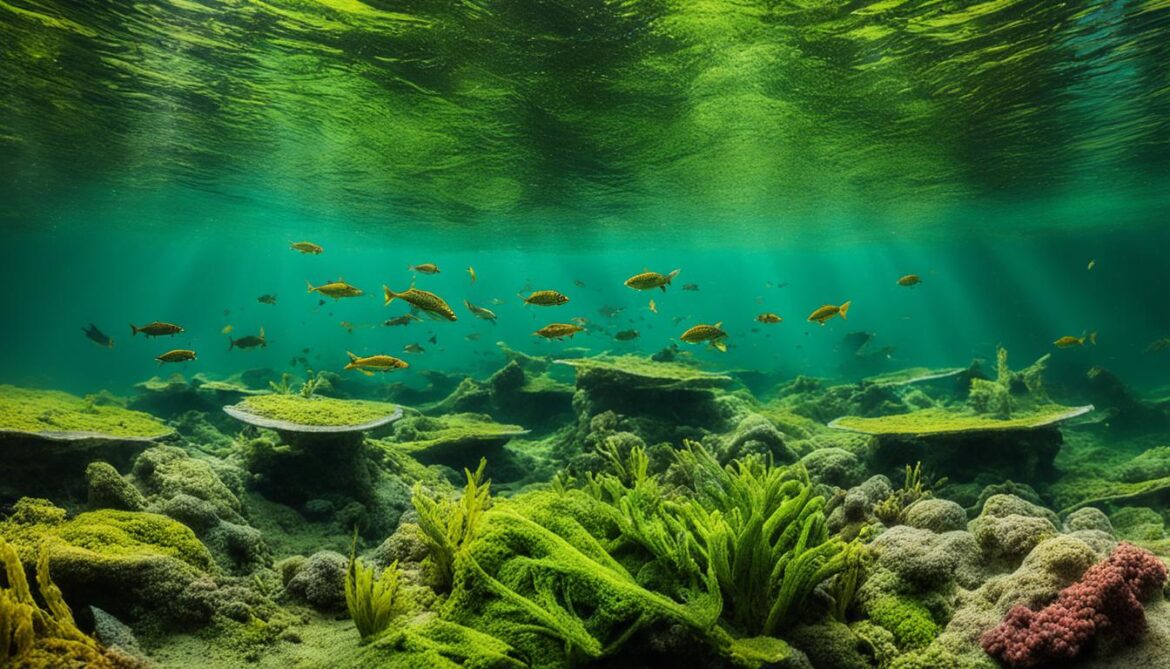
| Impact | Global Picture | Spanish Context |
|---|---|---|
| Habitat Loss | Loss of freshwater habitats worldwide due to climate change. | Conversion of freshwater to saltwater ecosystems in Spain. |
| Species Extinction | Threat to global freshwater species, with many facing extinction. | Endangered species in Spanish lakes and rivers due to changing conditions. |
| Water Temperature | Rising water temperatures affecting freshwater ecosystems. | Risks to Spanish freshwater species due to increasing water temperatures. |
Marine Biodiversity in Spain
Spain is renowned for its diverse marine biodiversity along its picturesque coasts, which include the Bay of Biscay and the Mediterranean Sea. These vibrant marine ecosystems are home to an array of fascinating species, both big and small. From majestic whales and dolphins to colorful corals and seagrasses, the marine life in Spanish waters is truly captivating.
Unfortunately, the marine biodiversity in Spain faces significant challenges, primarily due to the impacts of climate change. Rising sea temperatures, changing ocean currents, and acidification pose threats to the delicate balance of these ecosystems. These changes can have far-reaching consequences, affecting not only the marine species but also the entire food chain.
The vulnerability of the Bay of Biscay, located on the northern coast of Spain, is particularly concerning. The region is well-known for its rich marine biodiversity, including important habitats for numerous species. However, the warming sea temperatures and alterations in nutrient availability have already begun to impact the fish populations and marine primary production in this area.
The Mediterranean Sea, which borders Spain along its eastern coast, is also experiencing the effects of climate change. As one of the most biodiverse and ecologically important seas globally, the Mediterranean is home to a wide range of marine species. However, increasing temperatures and other climate-related factors are affecting the distribution of these species and disrupting the delicate balance of the ecosystem.
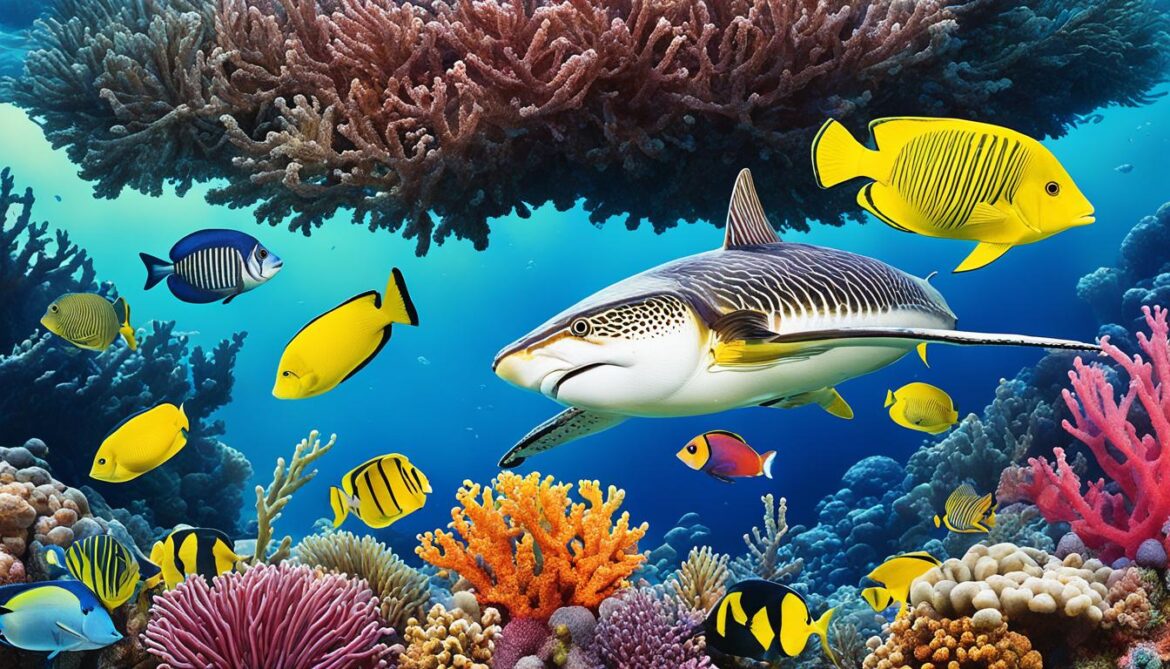
Conservation efforts are crucial to protect and sustain the unique marine biodiversity in Spanish waters. By implementing measures to mitigate climate change impacts, such as reducing greenhouse gas emissions and promoting sustainable fishing practices, we can help preserve these valuable ecosystems for future generations.
| Biodiversity Impacts | Examples |
|---|---|
| Change in fish populations | Shifting distribution of commercially important fish species |
| Primary production | Decrease in phytoplankton abundance due to warmer waters |
| Species distribution | Shifts in the range of migratory species such as sea turtles |
Exotic Species and its Impact on Spanish Biodiversity
Invasive species present a significant threat to the biodiversity of Spain. When exotic species are introduced, native ecosystems can be disrupted, leading to the decline of native species and the alteration of habitats. The impact of invasive species can have far-reaching consequences not only for the affected ecosystems but also for the overall balance of biodiversity in Spain.
Spain has recognized the threat posed by invasive species and has implemented control measures to mitigate their impact. These measures aim to prevent and control the spread of invasive species, protecting the native biodiversity of the country.
“Invasive species are a major concern for the conservation of Spain’s unique flora and fauna,” says Dr. Maria Lopez, a biodiversity expert at the Spanish National Research Council. She further emphasizes the importance of implementing effective control measures to address the issue.
“The introduction of invasive species can lead to the displacement or extinction of native species, disrupt ecosystem functioning, and negatively impact ecosystem services,” says Dr. Lopez. “It is crucial to prioritize the conservation of native biodiversity and actively manage invasive species to preserve the ecological integrity of Spain’s ecosystems.”
Spain’s control measures for invasive species include:
- Strict regulations and protocols for the importation of plants and animals to prevent the accidental introduction of invasive species
- Monitoring and early detection programs to identify and respond to invasive species before they become established
- Mechanical or chemical removal of invasive species, depending on the specific context and feasibility
- Public awareness campaigns to educate the public about the impact of invasive species and the importance of preventing their introduction
These control measures require collaboration between government agencies, conservation organizations, and the wider public to effectively manage and mitigate the impact of invasive species on Spanish biodiversity.

| Species | Impact |
|---|---|
| Ambrosia artemisiifolia (Ragweed) | Can cause severe allergies in humans and outcompete native plant species |
| Myocastor coypus (Nutria) | Damages riverbanks, reduces plant diversity, and alters aquatic habitats |
| Spartina alterniflora (Cordgrass) | Displaces native plant species in coastal ecosystems, altering the structure and function of habitats |
| Ostreopsis cf. ovata (Dinoflagellate) | Produces toxic blooms that harm marine life and pose risks to human health |
The table above highlights some examples of exotic species and their impacts on Spanish biodiversity. These species pose challenges to ecosystem stability and require targeted management strategies.
By implementing effective control measures and raising awareness, Spain can continue to protect its native biodiversity and preserve the unique ecosystems that contribute to the country’s natural heritage.
Conclusion
In conclusion, Spain’s biodiversity is remarkable, encompassing a diverse array of animal and plant species. However, this invaluable biodiversity faces numerous threats, including habitat loss, climate change, and invasive species. To safeguard Spain’s unique flora and fauna, it is crucial to prioritize conservation efforts such as establishing protected areas and implementing comprehensive action plans.
Continued research and heightened awareness are essential for the long-term sustainability of Spain’s biodiversity. By pooling our efforts, we can protect and preserve the natural treasures that make Spain a biodiversity hotspot.
Let us remain committed to the preservation of Spain’s rich biodiversity, ensuring that future generations can marvel at the sheer beauty and ecological significance of its wildlife and ecosystems.





